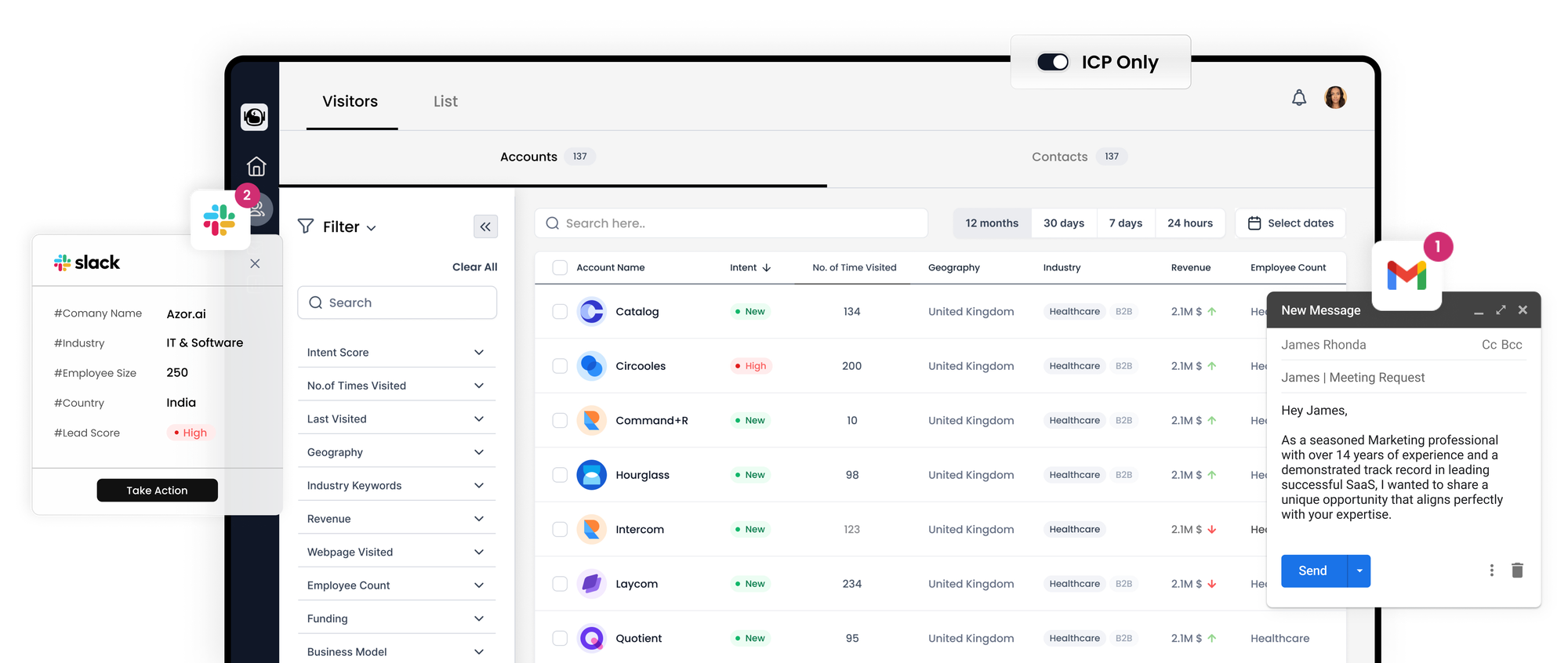Website Monitoring: The Techniques and Reasons Behind It

Operating a website without user insights is akin to navigating uncharted territory without the aid of a compass or GPS; one may find themselves meandering without direction, unclear on which routes lead to the desired destination – in the digital realm, that destination is the success of your website. Do you know where your users are clicking? How they traverse your site? Whether they can easily find the information they seek? Grasping these user behavior nuances is vital for refining the experience on your website. Website monitoring comes into play here, offering the ability to track users and harvest critical data that can enhance your site’s efficacy. In this discussion, we’ll delve into the intricacies of website monitoring and discover how it serves as a navigational beacon in the digital expanse. Moreover, we’ll touch upon ethical practices for tracking users while remaining within legal boundaries.
What does website monitoring entail?
Website monitoring involves the systematic collection and examination of data concerning users’ actions and behaviors on a website. It stands as an indispensable instrument for website proprietors. Through monitoring, you can discern various metrics such as visitor numbers, their origins, the duration of their visits, and their interactions with your site.
There exist two modalities of web monitoring: first-party and third-party. First-party monitoring entails the accumulation of data directly from visitors on your own website, capturing details like IP addresses, page views, and user interactions. Third-party monitoring, conversely, is executed by external entities that track user activities across numerous websites. This method is frequently employed by advertisers and marketers to compile information on user habits and preferences to tailor advertising more precisely.

Why is user tracking fundamental for websites?
With over 5 billion active online users globally, the advent of big data and advanced analytics has proliferated the reasons for user tracking. Numerous sites engage in this practice to enhance their offerings, performance, user-friendliness, and security. Tracking enables websites to gain an understanding of their audience and the impact their content has.
Principal Motivations for Online Tracking Include:
**Customizing User Interactions**: Companies observe their website users to garner insights about their digital clientele. Tracking navigational patterns and site engagement, enterprises can distill valuable knowledge about customer behavior, which can then be utilized to create more personalized and engaging user experiences.
**Evaluating Success Metrics**: Website tracking is instrumental in pinpointing effective campaigns and marketing endeavors that draw visitors. Tools like Google Analytics provide intelligence on page performance, including views, bounce rates, and visit duration. Such data enable businesses to concentrate their efforts on fruitful tactics and reduce investment in less productive ones.
**Optimizing Targeted Advertising**: Through targeted ads, companies can offer more pertinent and potentially successful advertising to consumers. Analytical data aid in discerning the most efficacious ad types and monitoring generated revenue, whether through clicks or sales. This intelligence is crucial in ensuring advertisements reach the intended demographic.
**Monitoring Lead Conversions**: Comprehending the origin of leads is critical, particularly when the goal is to expand your customer base. Tracking on-site activity allows for the identification of successful strategies and the allocation of time and resources to the most effective methods for lead generation.
Methods of User Tracking on Websites
Websites employ various techniques to monitor user activities. Let’s explore the most common tracking methods employed:
IP Address Tracking
Each device has a unique IP address which acts as its digital identifier. While an IP address doesn’t reveal personal information, it does disclose the device's location, pinpointing the country, city, or region. This geographic data is invaluable for crafting localized campaigns and bolstering website security.
Cookie Tracking
Cookies are prevalent tools for tracking, with around 40% of websites deploying them. These small files, saved on users’ devices, store data about online activities, enabling websites to remember preferences and provide a tailored browsing experience. E-commerce platforms, for instance, use cookies to recall items in shopping carts even after the browser is closed.
Digital Fingerprinting
Digital fingerprinting compiles a device's unique attributes, such as operating system, screen dimensions, language preferences, IP address, and browser extensions. Websites can thus form a distinct profile for each user, utilizing background JavaScript code in browsers to generate unique identifiers.
Tracking Pixels
Tracking pixels, or web beacons, are tiny image files embedded within emails or web pages to monitor user engagement. Although invisible to users, the embedded code within these images activates upon email opening or website visitation, enabling data collection for marketing analysis and strategy refinement.
Cross-Website Tracking
Cross-website tracking follows user interactions across various websites or domains, predominantly for marketing, customer experience enhancement, or fraud detection. Employing code snippets on sites, it assembles data on user interests based on their web activity, aiding in remarketing efforts by allowing targeted advertising and content personalization based on inter-site behavior.
Regulations on Website Tracking
GDPR Compliance in Tracking
The General Data Protection Regulation mandates stringent user data protection, granting individuals greater data control and demanding transparency from website operators regarding tracking. Websites must secure consent before using cookies or similar technologies for monitoring purposes, provide clear tracking disclosures, offer opt-out choices, and document user consents meticulously.
CCPA Guidelines for Tracking
The California Consumer Privacy Act and California Privacy Rights Act stipulate how personal information is managed in California. These laws necessitate that businesses notify consumers about personal data collection and usage. They must allow consumers to reject the sale of their data and to request its deletion. For website tracking, the laws enforce clear notifications and opt-out options for users regarding tracking technologies and targeted ads. Compliance includes privacy policy updates and adherence to consumer privacy preferences.
Tracking Website Users While Respecting Legal Boundaries
Adhering to legal regulations doesn't equate to ceasing all user tracking; it means prioritizing user privacy and consent in your tracking efforts.
To legally track users on your website, consider the following guidelines:
- Employ a secure connection (HTTPS) for data tracking and transfer.
- Select reputable tracking tools that comply with current privacy laws.
- Track users only for legitimate, defined purposes.
- Detail your data collection methods clearly in your privacy policy, ensuring it's easily accessible.
- Obtain explicit consent via a clear pop-up or banner before initiating data collection.
- Phrase consent requests clearly and specifically, avoiding any pre-ticked consent boxes.
- Provide a straightforward option for users to withdraw their consent at any time.
Keep access to data limited to authorized personnel only, and monitor access logs.
Anonymize data where possible to protect user identities.
Implement robust security measures against both external and internal threats.
Enable users to access, amend, or delete their personal data upon request.
Recognized Tools for Website User Tracking
Here are some widely-used tools for tracking website user behavior:
**Google Analytics**: This robust, free tool from Google offers extensive analytics on website traffic and user interactions. It can analyze different types of sites, from e-commerce to social media.
**Hotjar**: Hotjar provides visual insights using heatmaps, recordings, and surveys, showing where users click and what actions they take on your site.
**Mixpanel**: Focused on real-time data, Mixpanel analyzes user interactions, tracks conversions, and monitors engagement across websites and mobile apps.
**Clarity**: A Microsoft tool that reveals user behavior through heatmaps and session recordings, Clarity assists in understanding user engagement and gathering feedback.
**Adobe Analytics**: As part of the Adobe suite, this analytics tool dives deep into traffic data and user behavior, facilitating personalized user experiences and A/B testing.
How Users Can Prevent Website Tracking
For users seeking to minimize website tracking, there are several strategies to consider:
Limit personal data sharing online: Be mindful of the personal information you disclose on the internet.
Use private browsing modes: Incognito or private browsing can help prevent your activity from being stored or tracked.
Employ anti-tracking tools: Browser extensions, VPNs, and privacy-centric browsers or search engines can inhibit trackers.
Clear browser data: Regularly delete your browser’s cache and history to eliminate tracking remnants.
Enable GPC and DNT signals: These browser features express your preference against tracking, though not all websites honor them.
Stay logged out of social platforms: Logging out of social media accounts when not in use can reduce cross-site tracking.
Manage cookie settings: Block all or specifically third-party cookies to limit tracking, with the caveat that it may affect site functionality.
Opt-out of tracking cookies: Some sites allow you to opt out of tracking via their privacy policies, reducing data collection.
Common Questions Answered
What does website tracking entail?
Website tracking involves the gathering of data on how visitors interact with a website. This practice enables site owners to understand visitor behavior better and optimize the website for an improved user experience. Tracking can be facilitated through external services like Google Analytics, which compiles data on page views, duration of visits, bounce rates, and search terms used.
What is the purpose of web tracking?
Web tracking is utilized to amass crucial insights about visitors and their interactions with a website. The derived data helps to tailor the user experience, bolster engagement levels, and serve as a foundation for analysis, marketing, and targeted advertising within the digital economy.
Is it legal to track website visitors?
Tracking website visitors is not inherently illegal and is a common practice for enhancing service delivery. However, due to growing privacy concerns among internet users, numerous countries have established laws to regulate tracking practices or to mandate transparency about such activities.
Does tracking users impact a website's SEO?
Website tracking itself does not influence a website’s search engine optimization (SEO). Search engines like Google continue to index and rank your website without considering user tracking scripts. However, the inclusion of third-party analytics tools could potentially affect site speed and, consequently, SEO if they result in slower page loading times.
Can website tracking slow down page loading?
Indeed, website tracking may affect page loading speed, particularly if multiple tracking scripts are in use or if they are not optimized correctly. An overabundance of scripts, especially from third-party services, can lead to increased loading times for your website.
